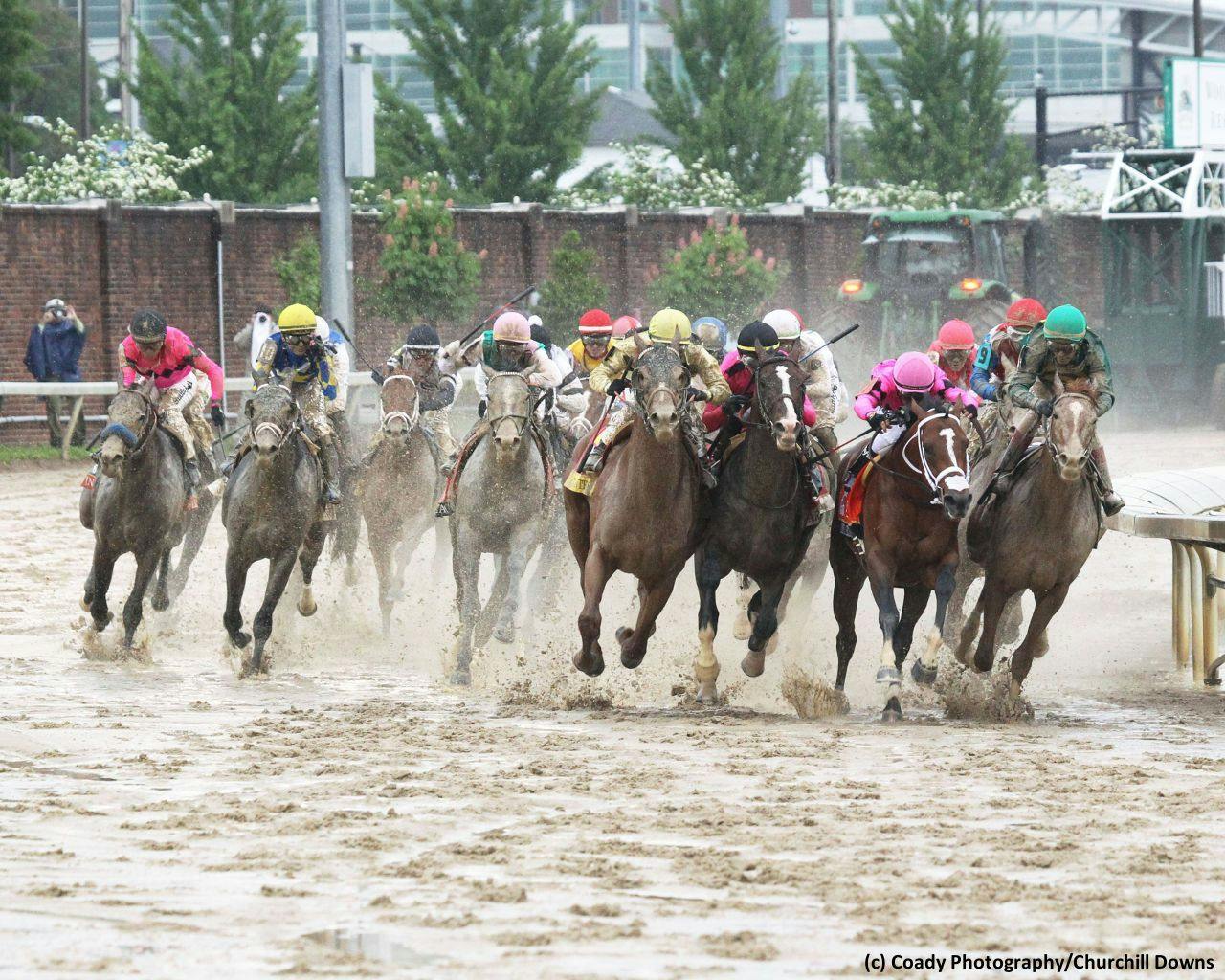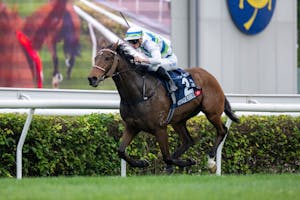An introduction to track conditions (and all the related lingo)

The 2019 Kentucky Derby (G1) at Churchill Downs took place over a sloppy track. (Photo by Coady Photography/Churchill Downs)
Thoroughbred horse racing is an outdoor sport and races typically take place rain or shine. That means track conditions can vary widely with the weather.
Many terms are used to describe the amount of moisture held by dirt, turf, and synthetic racing surfaces.
If you’re confused by all the lingo, never fear! We’re here to explain the terms and get you up to speed.
Equibase (the industry database for North American Thoroughbred racing) recognizes the following descriptive labels for racing surfaces.
Dirt
Fast (abbreviated as "ft")
When a dirt track is dry, it is labeled fast. The term “fast” has little to do with the speed of a racetrack. A fast (dry) track can produce slow times, and a wet track can produce fast times.
Good (gd)
A nearly fast track, drying out from rainfall, is labeled good.
Wet fast (wf)
A track with surface water (from fresh rainfall) that hasn’t had time to sink in and affect the base.
Sloppy (sy)
Similar to a wet fast track. A surface with some moisture in the base.
Muddy (my)
Once the base is meaningfully wet, a dirt track is labeled muddy.
Heavy (hy)
A slow and tiring track heavily affected by rain, though this term isn’t widely used anymore.
Slow (sl)
A track with moisture in the base, but with some surface drying.
Frozen (fz)
Some freezing of the dirt has occurred because of cold temperatures. This description is rarely (if ever) used in modern racing.
Sealed (s)
Used in conjunction with off-track labels, such as “sloppy (sealed)” or “wet fast (sealed)," to indicate a dirt track compacted by machinery to seal out moisture and reduce the amount of water reaching the base.
Turf
Firm (fm)
A standard dry turf course is described as firm.
Hard (hd)
An extremely firm turf course may be labeled hard, though the term is uncommon.
Good (gd)
A drying turf course still holding some moisture, compared to a firm surface.
Yielding (yl)
When rainfall strikes, turf degrades to yielding, a slower racing surface more likely to suffer damage (such as divots) from racehorse hooves.
Soft (sf)
A heavy amount of rain can produce a soft course, which is typically even slower and softer than a yielding course.
Heavy (hy)
This label is used in Europe and Australia to indicate a turf course even more saturated than a soft course. In North America, when a turf course gets this wet, you can expect to see grass races transferred to dirt or synthetic.
Synthetic
Fast
Since synthetic tracks aren’t particularly affected by weather, they are almost always labeled “fast” in North America.
ADVERTISEMENT



